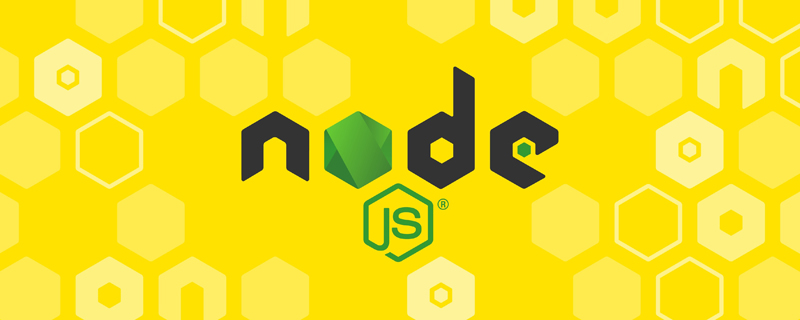The node background framework includes: 1. Koa, an open source Node web framework that uses Generator to implement middleware process control and try/catch to enhance exception handling; 2. Nest, an open source Node server used to build efficient and scalable Node servers. A framework for client applications; 3. Socket, a framework used to create real-time two-way communication between the client and the server; 4. Sails, a very solid Node framework that provides everything needed to build web applications of any scale. All features.

The operating environment of this tutorial: Windows 7 system, nodejs version 16, DELL G3 computer.
Node is the most agile server-side web application platform because it provides application development companies with the convenience of building a scalable single programming language web platform. It is one of the most popular open source JavaScript runtime frameworks and has cross-platform properties, allowing us to run code outside the browser.
1. Koa
Koa is more like a "framework of frameworks" because it is too simple and extremely free. Koa uses Generator to implement middleware process control, and uses try/catch to enhance exception handling. At the same time, you can no longer see complex callbacks in the Koa framework. The Koa framework itself is very small and only packages some necessary functions. There is no process management and it needs to be used with third-party packages.
Koa.js can be used for:
Front-end system
Back-end system
Hybrid system
Koa.js main features:
Represents modernity and the future
, smaller in size than all Node.js frameworks.
There is a built-in error catcher to prevent website crashes.
Use the context object, which holds both request and response objects.
2. Nest
Nest is a framework for building efficient, scalable Node.js server-side applications. A truly complete, industrial-grade framework. It uses Progressive JavaScript, has built-in and full support for TypeScript (but still allows developers to write code in pure JavaScript) and combines elements of OOP (Object-Oriented Programming), FP (Functional Programming) and FRP (Functional Reactive Programming). Provide a complete solution, from code to module splitting to microservice model. And the underlying HTTP platform of its framework is implemented based on Express by default, so there is no need to worry about the lack of third-party libraries. It also provides an out-of-the-box application architecture that allows developers and teams to create applications that are highly testable, scalable, loosely coupled, and easy to maintain.
Nest.js can be used to:
Write cleaner and reusable code.
Write code with higher-level structures such as interceptors, filters, pipes, etc.;
write scalable, testable, and loose applications.
Nest.js main feature
is easy to extend: it can be used with other libraries.
Allows developers to code entirely in pure JavaScript.
It combines the characteristics of functional programming, object-oriented programming and reactive programming.
Open framework API to help developers use various third-party modules on various platforms.
It has a detailed and well-maintained documentation.
3. Total
Total.js is a good framework to help you create Node.js, Web pages/applications, and also supports MVC architecture.
4. Socket
Socket.io is a framework used to create real-time two-way communication between the client and server. To do this, the client needs to install http://Socket.io in the browser, and the server needs to integrate the http://Socket.io package. This allows data to be shared in millions of forms. However, the most popular method is still JSON.
Socket.io consists of the following two parts:
JavaScript service: Node.js
JavaScript client library: Node.js
Note: Socket.io is also compatible with many other languages, such as Java, C+, Swift, Dart, .Net and Python.
Socket.io can be used for:
Various namespaces
Broadcast
event handling
Error handling
Logging and debugging
Chat applications
Internal
Socket.io key features:
Encode information into named JSON or binary events.
Add "real-time" capabilities to your application.
Supports automatic reconnection
Excellent speed and reliability
Instant messaging and chat
5. Sails
Sails is a very solid Node.js framework that provides all the features needed to build web applications of any size. The Express framework is used at the bottom to provide processing of HTTP requests, and the Socket.IO framework is used to process WebSocket requests. It also implements ORM functionality, allowing your application to switch from one backend database to another without making major modifications. Sails is particularly suitable for developing applications that have high requirements for real-time updates of data, and its annotations are so detailed that you may not know how to use them. A framework that cares about developers can last for a long time.
6. Egg
Egg is based on Koa, constraining and standardizing team development. The core is to help development teams and developers reduce development and maintenance costs. It provides the ability to customize the upper-layer framework based on Egg, a highly scalable plug-in mechanism, built-in multi-process management,
excellent performance, and stable framework. It has been used in many Alibaba product lines, which can prove its safety and reliability, so please feel free to use it.
7. Hapi.js
Hapi.js continues all the advantages of Express.JS and adds some features. Developers no longer have to waste time building infrastructure and can use this time to write reusable application logic. Some of its advantages: fixing bugs and adding new features does not take time, building APIs for different types of clients, plugin-based architecture makes scaling easy, better control over how requests are processed.
Hapi.js can be used for:
Website
HTTP Proxy Application
API Service
Hapi.js Key Features:
Input Validation
Logging
Error Handling
Code Reusability
Caching
No external dependencies
-based functionality
Integration Framework: Provides comprehensive authentication in the Node framework and authorization API support.